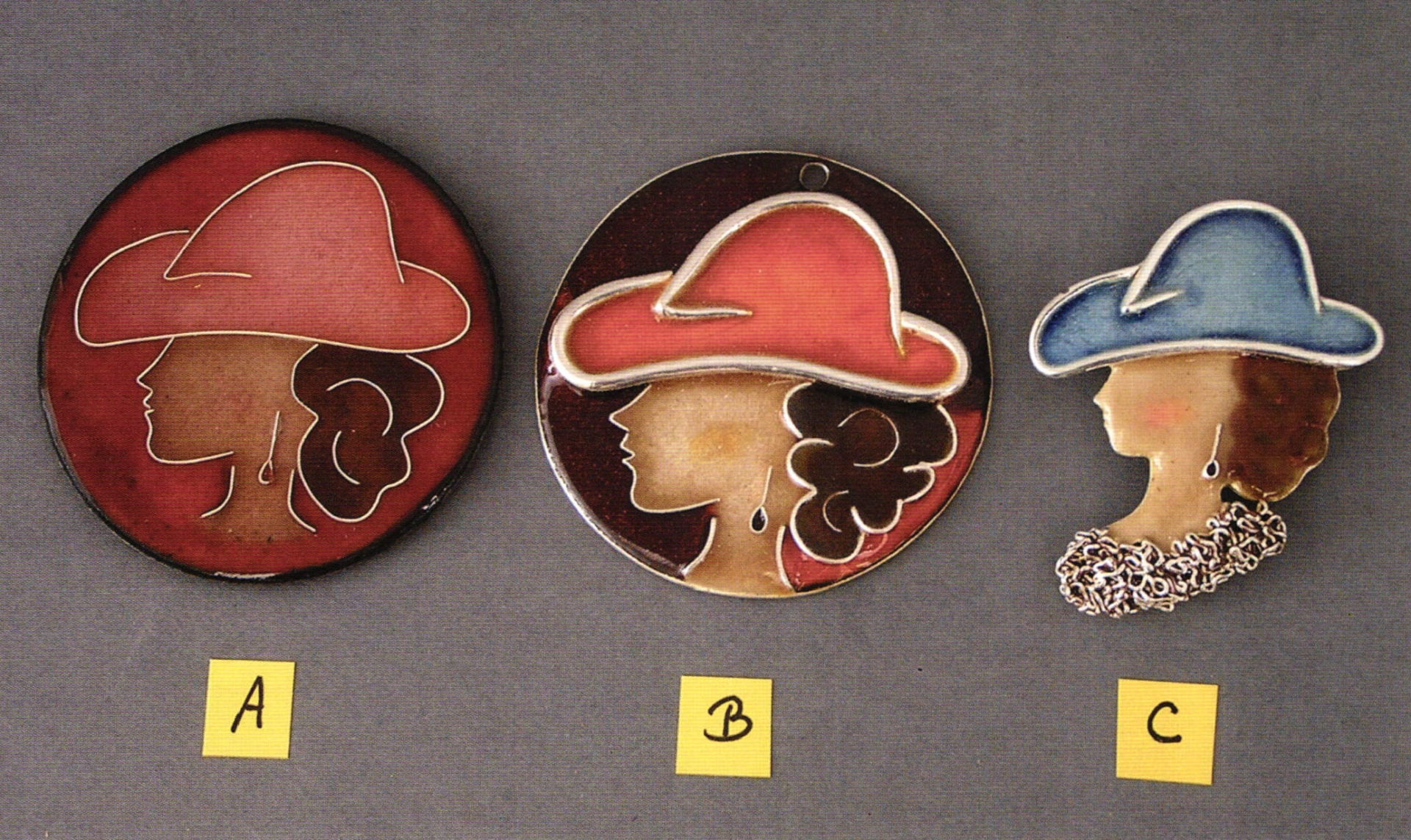Designing PMC Pieces for Enamel
2 Minute Read
Precious Metal Clay, being fine silver and high karat gold, is the perfect material to accept enamel. It is possible to achieve incredible texture and depth that would be very labor intensive, and sometimes impossible, with conventional metals. With traditional enameling the colors of the enamel create the design and are quite often the focus of the piece. With PMC, the textures and designs that can be created are the 'star' of the piece. The challenge is to marry the characteristics of the PMC and the colors of the enamel so they compliment each other and work together to create a well balanced piece. The following photo illustrates a comparison between traditional cloisonné and PMC cloisonné. This is a somewhat simplistic illustration to show how texturing and changing the thickness of PMC can be used to add dimension to a design.
Figure 'A' is traditional cloisonné on copper. Figure 'B' is the same design using PMC+. There is approximately 12% shrinkage when the piece is fired, so it is slightly smaller than the copper cloisonné piece. The pendant base, the outline of the hat, the hair and the neck are cloisonné wires made from PMC. The outline of the face, the earring, and the inside curls of the hair are conventional cloisonné wire. Figure 'C' uses Original PMC, which has an approximate 28% shrinkage rate. The base of the piece, and the outline of the hat are Original PMC. The fur collar is PMC applied with a syringe. The earring is conventional cloisonné wire. The outline of the face and hair were omitted for a less defined look.
The general process in preparing a PMC piece for enameling is as follows. Make the PMC piece, fire it, finish it, enamel it. After firing, there are several ways to finish a PMC piece. Straight from the furnace the PMC has a white matte look. Enamel can be applied at this point, or the piece can be brought to a satin or high polish finish. Look closely at Figures 'B' and 'C'. The same colors were used on the faces. The face in Figure 'C' was enameled over the white matte finish as it comes straight from the kiln. The face in figure 'B' had enamel applied over a high polish. You'll notice a softer, more life-like shading and color in Figure 'C' because of the white background.
The following project is an easy PMC pendant designed using several common techniques in working with PMC. This is a great piece to make in order to introduce the enamelist to the material.
You assume all responsibility and risk for the use of the safety resources available on or through this web page. The International Gem Society LLC does not assume any liability for the materials, information and opinions provided on, or available through, this web page. No advice or information provided by this website shall create any warranty. Reliance on such advice, information or the content of this web page is solely at your own risk, including without limitation any safety guidelines, resources or precautions, or any other information related to safety that may be available on or through this web page. The International Gem Society LLC disclaims any liability for injury, death or damages resulting from the use thereof.
The All-In-One Jewelry Making Solution At Your Fingertips
When you join the Ganoksin community, you get the tools you need to take your work to the next level.
Trusted Jewelry Making Information & Techniques
Sign up to receive the latest articles, techniques, and inspirations with our free newsletter.
